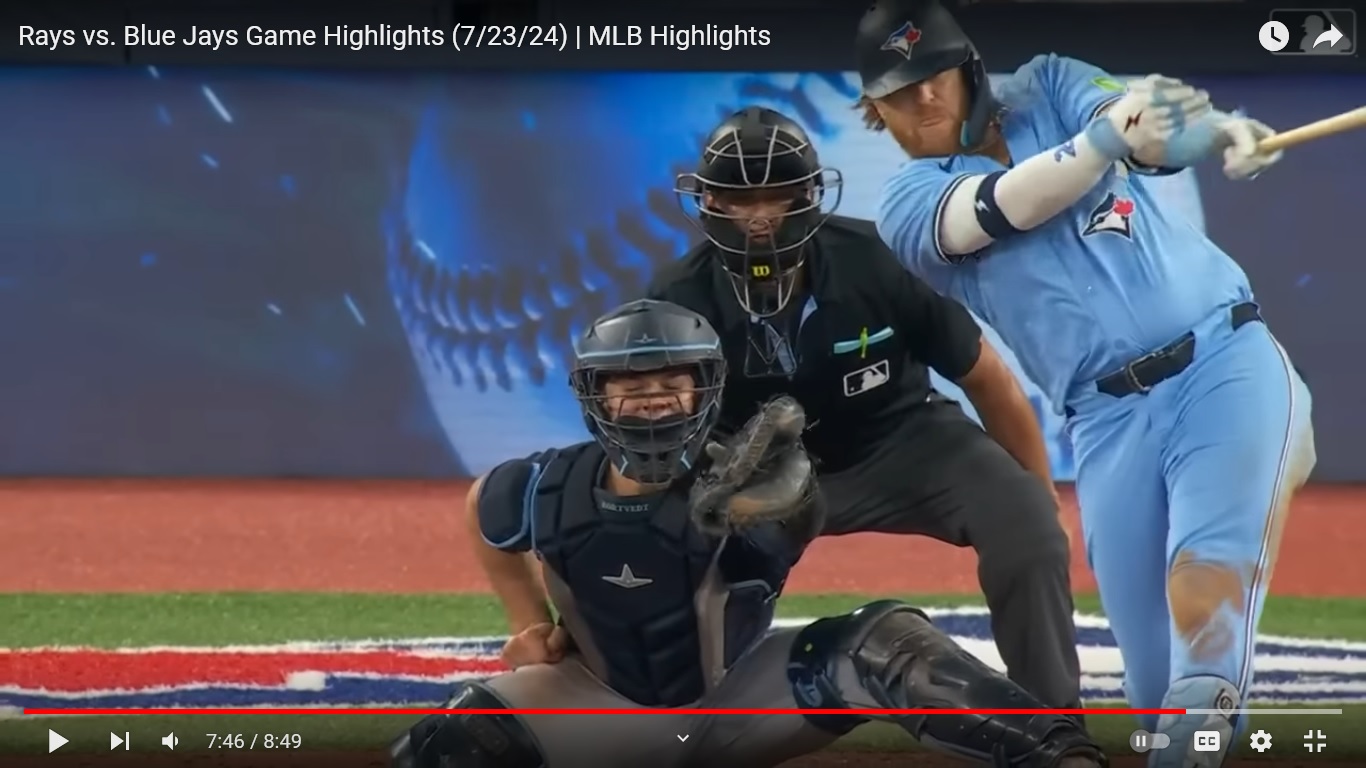709-218-7927 The Landfall Garden House 60 Canon Bayley Road Bonavista, Newfoundland CANADA A0C 1B0 |
|---|
Baseball Eyes
Next time you watch MLB highlights on YouTube take a closer look at the fielders when they catch the ball. Especially when they catch a ball that has been hit low and long, or high and near that takes an age to come back to Earth. Especially note the player’s hands – they will generally be held directly in front of the player’s eyes.
I learned this from a book.
The algorithm required to move a set of human limbs (all four are used) from one spot (from which the human starts running) to another (where another set of muscles can be used to snap close the baseball glove and catch the ball) is amazingly complex.
The ball leaves the baseball bat at around 100 mph and reaches what we hope will be the impact point after travelling some 500 feet in a parabolic (unpowered) arc excepting air resistance, and yet Kevin Kiermaier, Daulton Varsho, George Springer and their colleagues do it time and time again, often enough having leapt several feet into the air to snag a missile and prevent it going “over the wall”.
I have been programming for over 55 years and still can’t write a program to tie my shoelaces – an act which I demonstrated to my mother over seventy years ago – yet these guys do it several times in each game. And I bet they don’t know the first thing about computers; they are sports jocks, right?
How do they do it?
According to the book I’ve tread, they use two algorithms; maybe they are smarter than I am; they earn more money, that’s for sure.
The first algorithm says “your goal is to be in such a spot so that the incoming ball appears to be growing larger every millisecond, but not changing position”. A rough interpretation is “Try to get hit in the head by the incoming”, which is hardly a survival skill.
The second algorithm is one that has been used by Eukaryota, Animalia, Chordata, Mammalia, Primates, Haplorhini, Simiiformes, Hominidae, Homininae, Hominini, Homo, sapien since before they existed, to wit “move a bit further in this direction”
If you couple those two simple ideas together you get a Kevin Kiermaier. It’s as easy as that.
But I can’t do it at all, let alone do it well.

If you pause this video at the 7m46s mark you will see that the catcher, who squats, for heaven’s sake, in the line of flight which they dictate to the pitcher, retain their animal instinct to protect their eyes as best they can.
709-218-7927 CPRGreaves@gmail.com Bonavista, Friday, August 02, 2024 10:56 AM Copyright © 1990-2024 Chris Greaves. All Rights Reserved. |
|---|